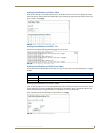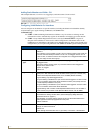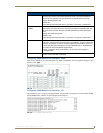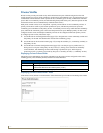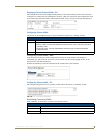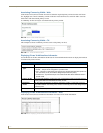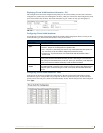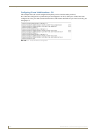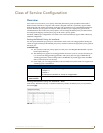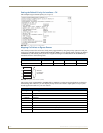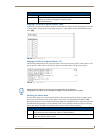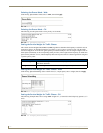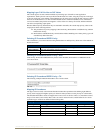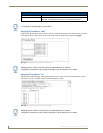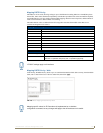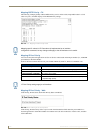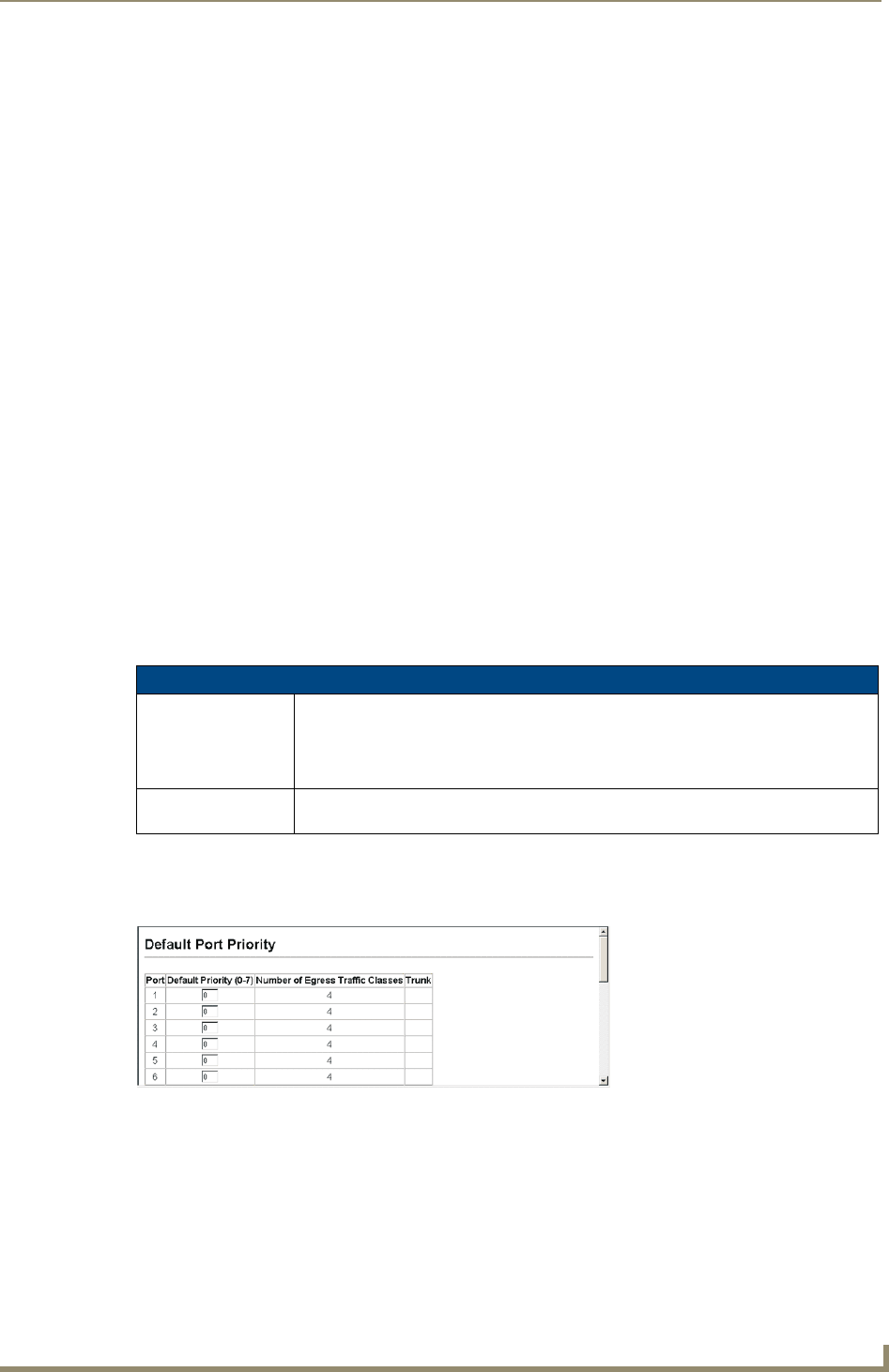
Class of Service Configuration
137
NXA-ENET24 - Software Management Guide
Class of Service Configuration
Overview
Class of Service (CoS) allows you to specify which data packets have greater precedence when traffic is
buffered in the switch due to congestion. This switch is designed with CoS to specifically support AMX’s
MAX audio and video streams, maximizing audio and video performance as it is transmitted throughout the
network. With four priority queues for each port, MAX’s packets in a port’s high-priority queue will be
transmitted before those in the lower-priority queues. You can change the default priority for each interface,
and configure the mapping of frame priority tags to the switch’s priority queues.
For MAX, AMX has pre-configured the A/V traffic so the switch automatically supports MAX without any
additional configuration.
Setting the Default Priority for Interfaces
You can specify the default port priority for each interface on the switch. All untagged packets entering the
switch are tagged with the specified default port priority, and then sorted into the appropriate priority queue at
the output port.
Command Usage
This switch provides four priority queues for each port. It uses Weighted Round Robin to prevent
head-of-queue blockage.
The default priority applies for an untagged frame received on a port set to accept all frame types
(i.e, receives both untagged and tagged frames). This priority does not apply to IEEE 802.1Q
VLAN tagged frames. If the incoming frame is an IEEE 802.1Q VLAN tagged frame, the IEEE
802.1p User Priority bits will be used.
If the output port is an untagged member of the associated VLAN, these frames are stripped of all
VLAN tags prior to transmission.
Setting the Default Priority for Interfaces - Web
Click Priority, Default Port Priority or Default Trunk Priority. Modify the default priority for any interface,
then click Apply.
Command Attributes
• Default Priority: The priority that is assigned to untagged frames received on the specified interface.
• Range: 0 - 7
• Default: 0
CLI displays this information as “Priority for untagged traffic.”
• Number of Egress
Traffic Classes:
• The number of queue buffers provided for each port.
FIG. 153
Web - Port Priority Configuration



